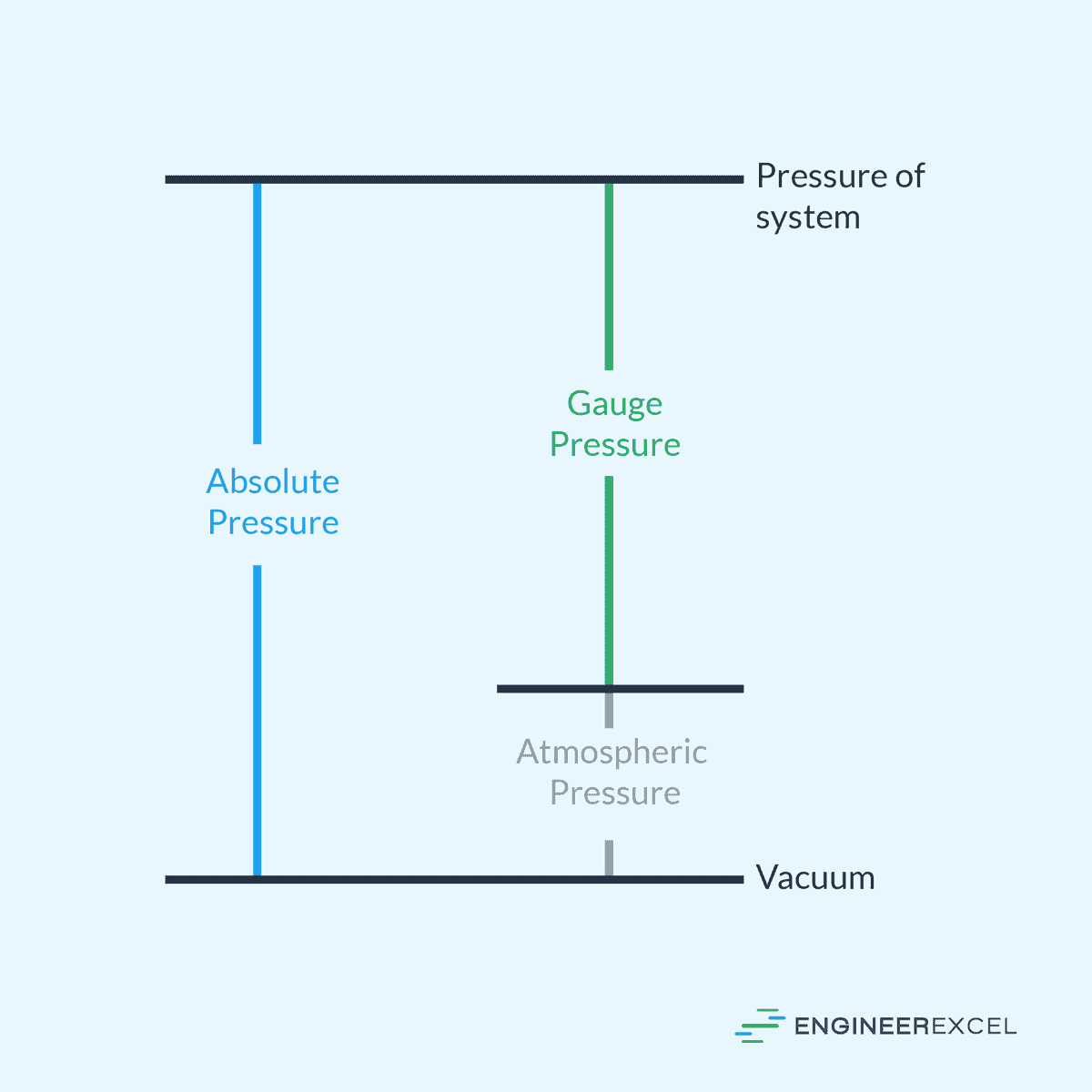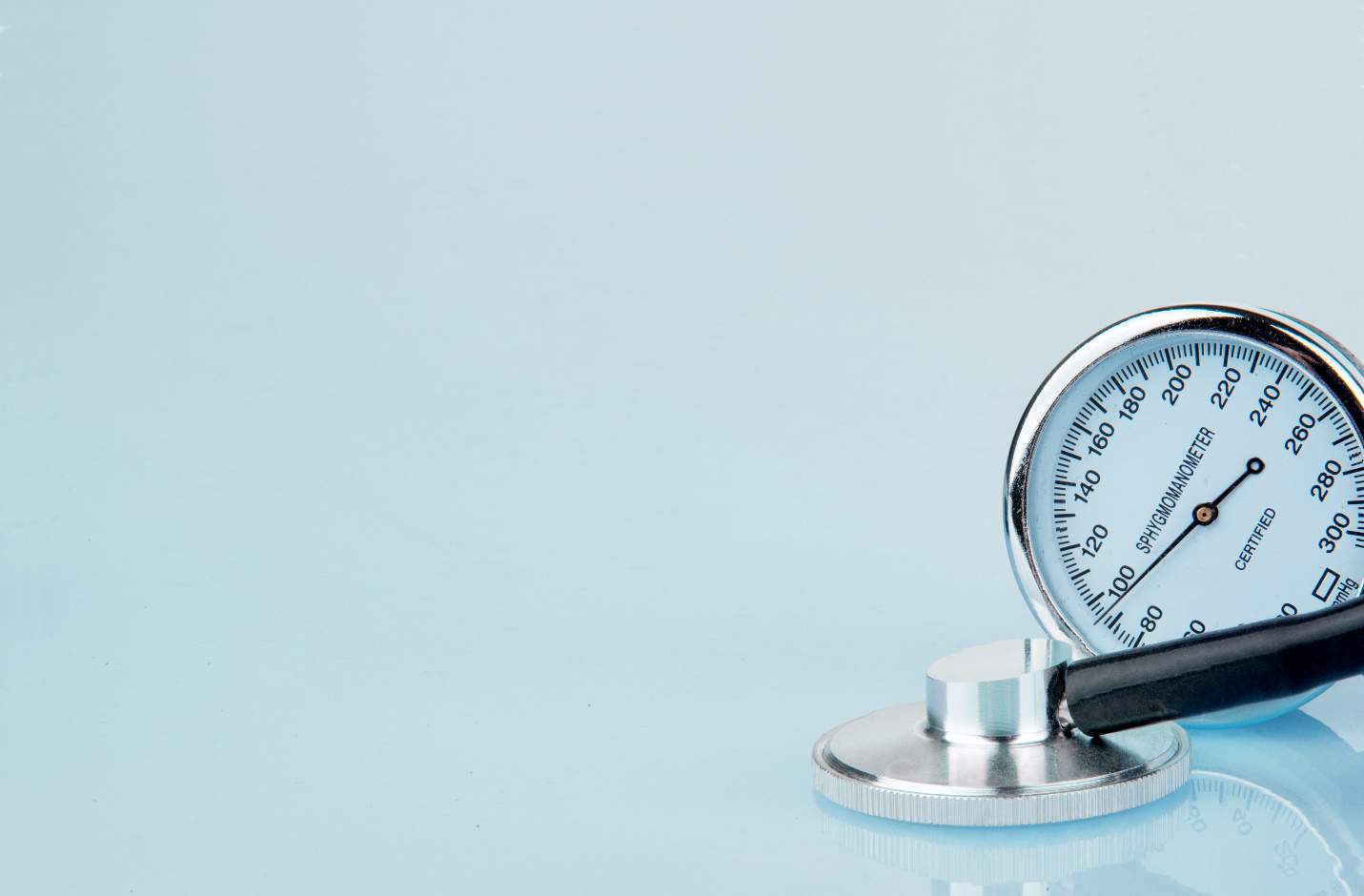Gauge pressure is the pressure measured relative to the ambient atmospheric pressure. It is commonly used in engineering and physics to describe pressure differences within enclosed systems, such as pipes, vessels, or tires.

In this article, we will delve into the definition, measurement, and applications of gauge pressure in various engineering contexts.
What Is Gauge Pressure
Gauge pressure is the pressure of a fluid contained in a closed system, measured relative to the surrounding atmospheric pressure. For example, if a pressure gauge reads 35 kPa, it indicates that the pressure inside the system is 35 kPa above atmospheric pressure.
It is essential to distinguish gauge pressure from absolute pressure. Absolute pressure is the total pressure within a system, measured relative to a perfect vacuum. It includes atmospheric pressure plus gauge pressure.

Elevate Your Engineering With Excel
Advance in Excel with engineering-focused training that equips you with the skills to streamline projects and accelerate your career.
To understand the distinction, consider a tire’s pressure. If a tire’s gauge pressure is 32 psi, this does not include atmospheric pressure. To determine the absolute pressure in the tire, one would add the atmospheric pressure, which is about 14.7 psi at sea level, resulting in an absolute pressure of approximately 46.7 psi.

The relationship between gauge pressure and absolute pressure can be mathematically expressed as follows:

Where:
- Pg = gauge pressure [Pa or psi]
- Pabs = absolute pressure [Pa or psi]
- Patm = atmospheric pressure [Pa or psi]
When the measured gauge pressure is negative or below atmospheric pressure, it is often referred to as vacuum pressure. Thus, vacuum pressure is simply the negative of gauge pressure:

Where:
- Pvac = vacuum pressure [Pa or psi]
In fluids, the absolute pressure is typically not negative because fluids exert pressure rather than creating a vacuum. As a result, the smallest absolute pressure is zero, which means that the smallest gauge pressure possible is equal to the negative of the atmospheric pressure. There is no theoretical limit to how large a gauge pressure can be.
It is imperative to note that pressure gauges commonly display gauge pressure and it is zero-referenced against the ambient air pressure. Thus, a reading of zero on a pressure gauge indicates that the pressure inside is equivalent to the atmospheric pressure outside.
In contrast, absolute pressure measurements account for the atmospheric pressure and are necessary when dealing with applications that require precise pressure measurements, such as process flows and meteorology.
To avoid confusion, engineers and technicians must specify the type of pressure being measured or utilized in calculations, as mixing them can lead to serious errors in both the design and operation of pressure systems.
Applications of Gauge Pressure
Gauge pressure measurements are useful in various applications where it is essential to measure pressure relative to ambient atmospheric pressure. These measurements are often preferred for practical purposes where the influence of the environment is substantial.
Tire Gauges
Tire pressure gauges are used to ensure that tires on vehicles are inflated to the correct pressure. This is critical for maintaining optimal contact with the road, ensuring even tire wear, and improving fuel efficiency. It is expressed in units of psi (pounds per square inch) or bar, where the measurement indicates the pressure inside a tire, minus atmospheric pressure.
Blood Pressure Measurements
The sphygmomanometer, a device used to measure blood pressure, employs a gauge to measure the pressure exerted by circulating blood upon the walls of blood vessels.

Blood pressure results are presented as two values, systolic and diastolic, which are essentially gauge pressures since they are above atmospheric pressure.
Pressure Vessels
Pressure vessels, such as boilers and gas storage tanks, use gauge pressure indicators to measure the pressure of the gas or liquid inside the vessel against atmospheric pressure. Monitoring and controlling this pressure are vital to ensure the safety and efficiency of the pressure vessel’s operation.
Piping Systems
In piping systems, gauge pressure is measured to monitor and control the flow of liquids and gases through the pipes. Properly managing this pressure is essential to prevent leaks, bursts, and to maintain the integrity of the piping system.
Pneumatic Systems
Pneumatic systems rely on controlled air pressure to operate various tools and machinery. Gauge pressure readings assist in adjusting the pressure to optimal levels for equipment functionality and safety, providing direct feedback on system performance.
Pressure Gauges
Pressure gauges are instruments used to measure the pressure of gases or liquids in a contained system. They typically consist of a dial or digital display indicating the pressure reading and a mechanism to convert the pressure into a readable format, providing vital information for monitoring and controlling various industrial processes. These instruments can be broadly categorized based on their operational mechanisms and application areas.
Mechanical Gauges
Mechanical gauges are the most common types, relying on a mechanical operation to measure pressure. Bourdon, diaphragm, and capsule gauges fall under this category. The Bourdon gauge uses a coiled tube, which flexes as pressure increases—a deflection that translates into a gauge reading. Diaphragm gauges comprise a diaphragm that deforms under pressure changes, and capsule gauges utilize a thin-walled capsule which performs similarly.
Digital Gauges
Unlike mechanical gauges, digital gauges provide a numerical display of pressure readings, typically powered by batteries or an external power source. They are known for their precision and often include features such as data logging and backlit displays, making them suitable for a variety of conditions.
Differential Pressure Gauges
These gauges measure the difference in pressure between two points within a system. They are vital in applications where pressure differential is essential, such as in filtration systems and flow measurement.
Hydraulic and Pneumatic Gauges
Hydraulic gauges are used for fluid pressure measurement in hydraulic systems, and pneumatic gauges are intended for gaseous systems. Their construction is tailored to withstand system-specific demands, including fluid compatibility and pressure ranges.
The selection of pressure gauges is contingent upon several factors, including required accuracy, pressure range, and environmental conditions. Proper maintenance and regular calibration are important to ensure the long-term reliability and accuracy of these instruments.
